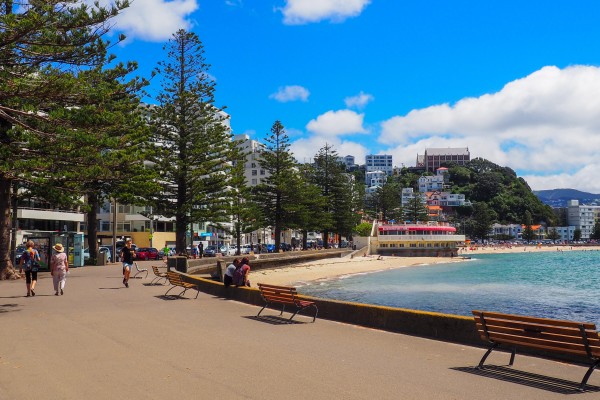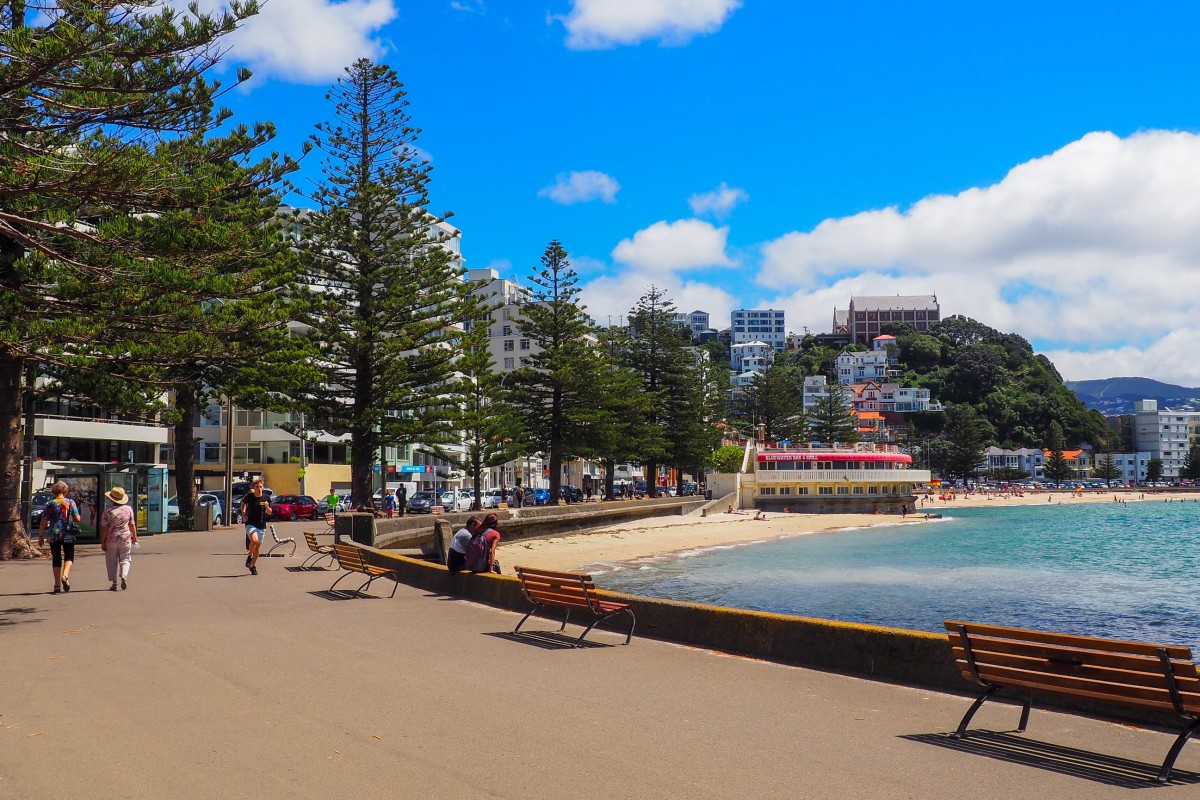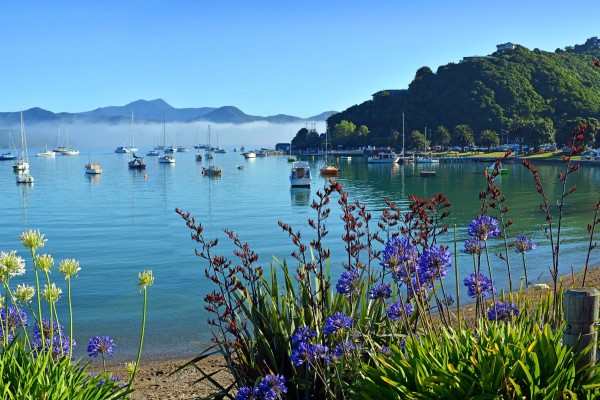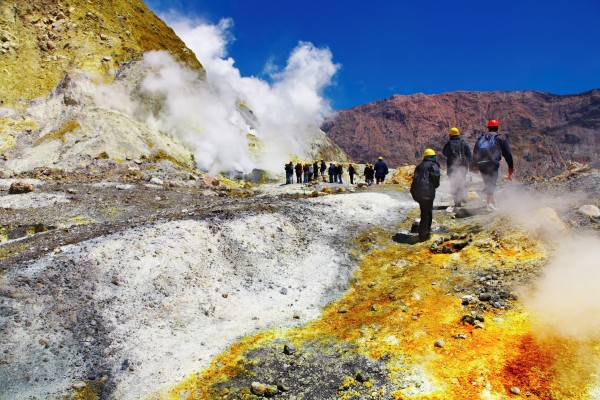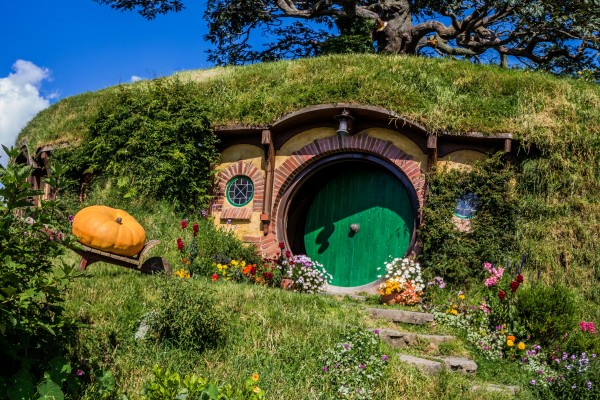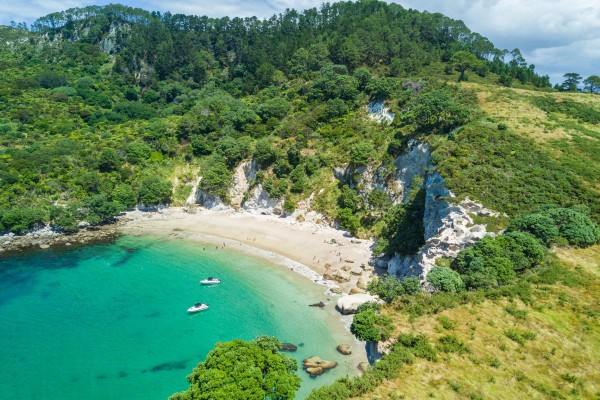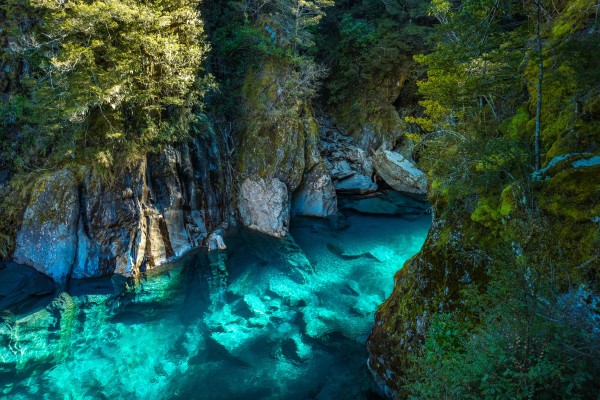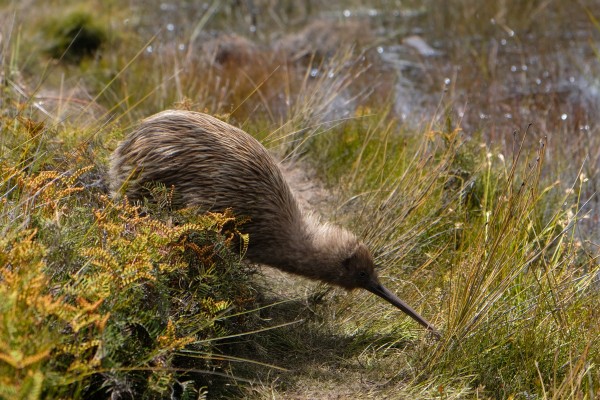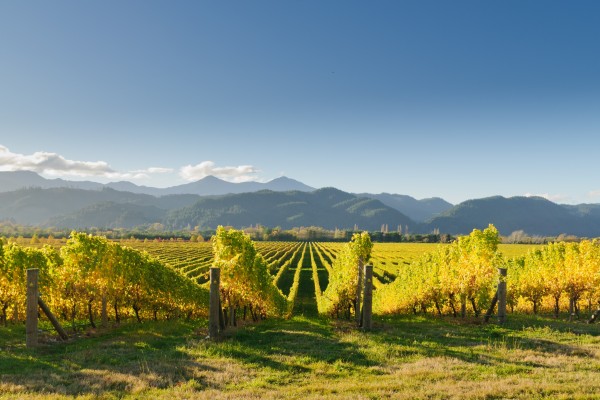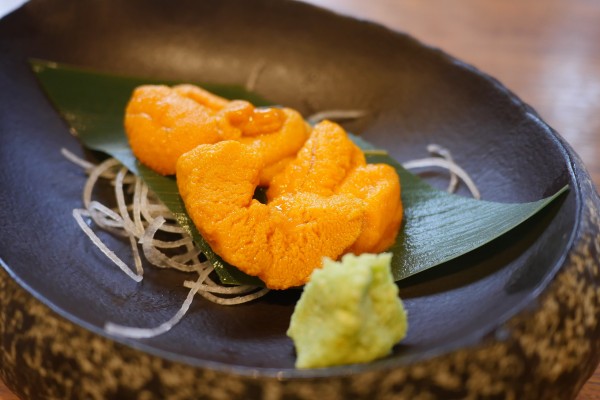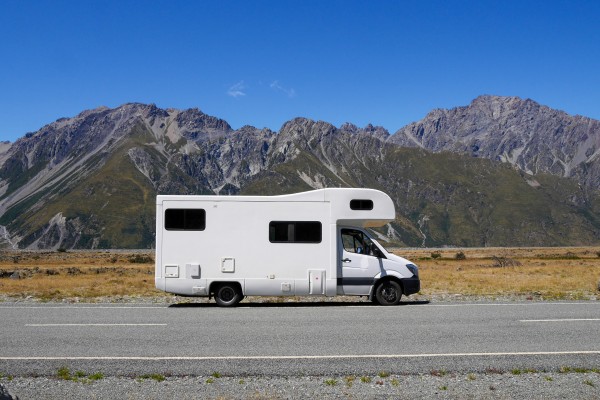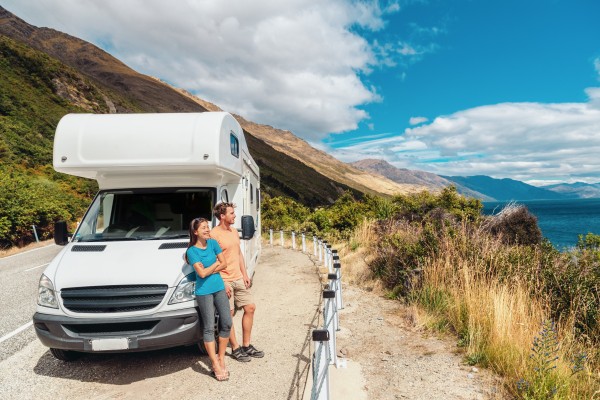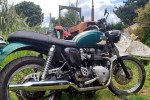11 of the best New Zealand beaches worth exploring
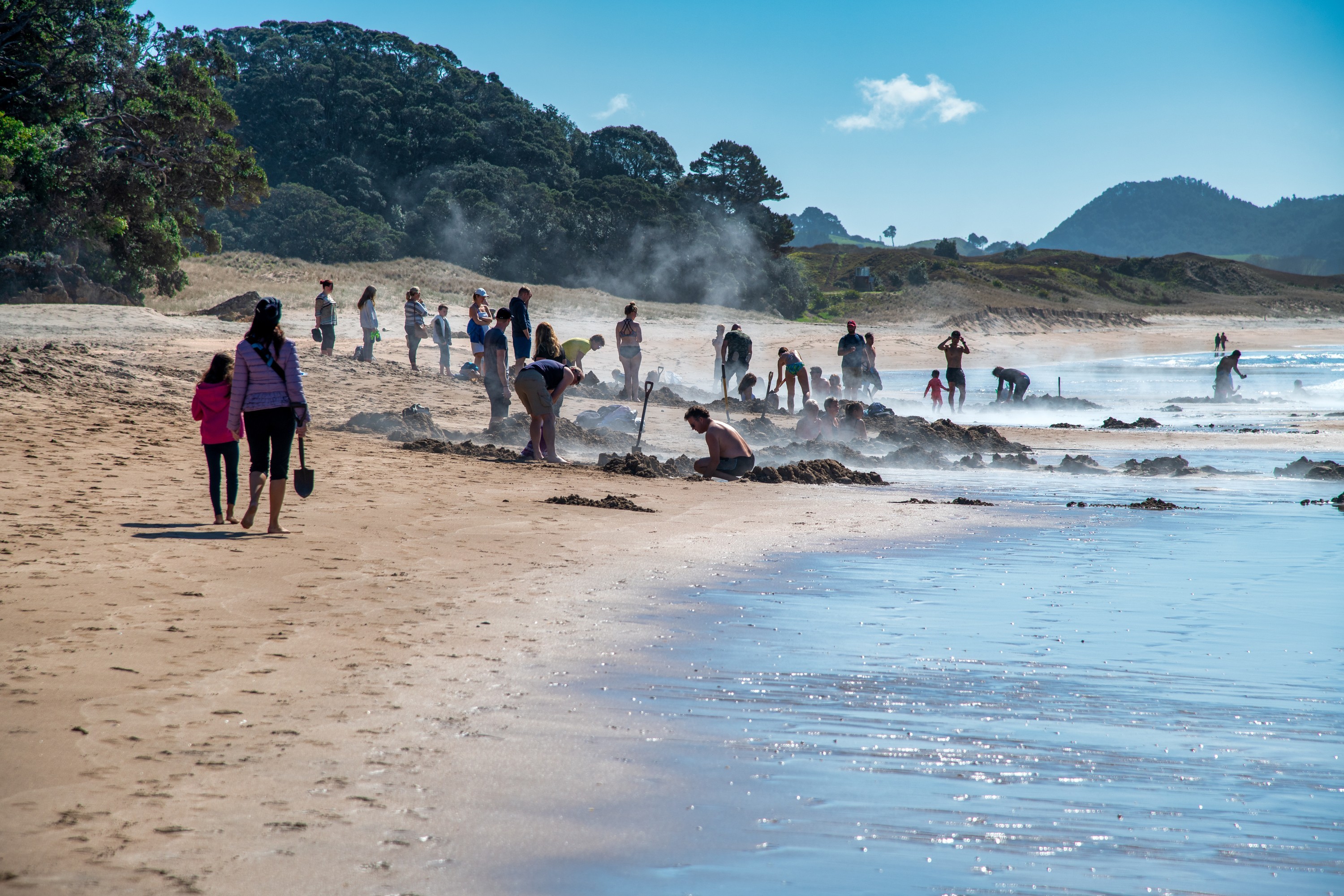
New Zealand is known for its stunning and rugged landscapes. From the epic locations used in Lord of the Rings to our breathtaking mountains and crystal clear lakes, there’s a lot of country to explore by road and by foot while you’re here. While hiking and road-tripping are definitely part of the Kiwi experience, our beautiful beaches are another treasure often overlooked.
New Zealand has 15,000km of coastline. That’s one-third of the coastline of Australia and a lot for a country 29 times smaller than Australia!
The importance of the sea in Aotearoa
Te Moana (the sea) is deeply embedded in the culture and history of New Zealand. For Māori, te moana has strong relationships to their whakapapa (genealogy). Their ancestors were expert astronomers, fishers and ocean navigators and expertly traversed thousands of miles of ocean by waka (canoe) from Polynesia to Aotearoa for thousands of years. Pre-colonisation, kaimoana (seafood) was an important part of the barter system used between tribes. Today, the role of kaitiaki (guardian) of the sea is still an important part of New Zealander's relationship with the sea and what we take from it.
According to the Ministry of the Environment, around 65% of Kiwis live within 5 km of the sea today. Fishing, diving and recreational sports are a huge part of New Zealand culture.
The Tiaki promise
While you are visiting New Zealand's beautiful beaches, it's important to tread carefully. The Tiaki Promise is a commitment to care for Aotearoa’s land, water, and sea. By embracing the Tiaki values, you contribute to preserving New Zealand's natural beauty for generations to come. Here are some easy things you can do to uphold the promise:
-
Take only photographs and leave only footprints
-
Dispose of your waste thoughtfully
-
Stick to the tracks and paths where possible
-
Give seals, sea lions and penguins space
-
Follow the fishing rules and throw undersized seafood back
-
Avoid fishing in marine reserves
By following these rules, you can ensure that the beaches remain enjoyable for visitors and our marine life.
1. Piha Beach - Located on the North Island’s West Coast

Located just an hour's drive from Auckland, Piha Beach is a favourite among locals and tourists alike. It's famous for its black sand, rugged cliffs, and world-class surf breaks. The iconic Lion Rock dominates the shoreline and offers a fantastic viewpoint for those willing to make the climb.
The town is close to the Waitakere Ranges Regional Park, a subtropical rainforest with waterfalls and hiking trails. When visiting Piha, you can expect excellent surfing conditions, dramatic scenery, and a relaxed beach town vibe that gets busy in the summer months. It's an ideal spot for both water sports enthusiasts and nature lovers.
It’s important to note that Piha Beach was closed for part of 2023 due to the devastating effects of Cyclone Gabrielle. Although it’s now reopened, this status could change if further damage occurs to the local roads.
2. Cathedral Cove - Located on the Coromandel Peninsula
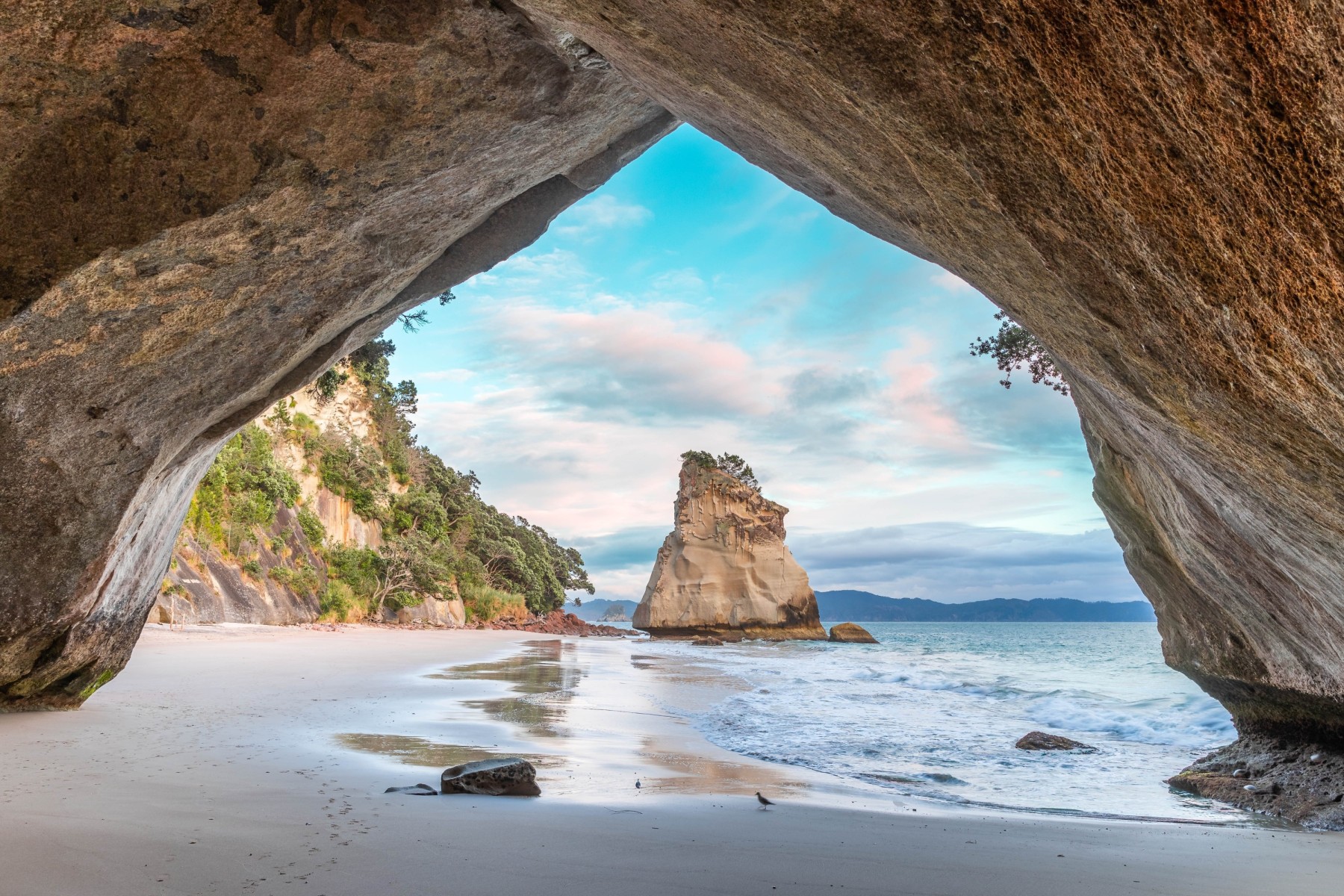
On the Coromandel Peninsula, you'll find the popular Cathedral Cove. Although it’s one of New Zealand’s most popular tourist destinations, it’s for a good reason. The cove is usually accessible via a beautiful walking trail through lush native bush, making getting to the beach nothing short of magical. Due to the devastation caused by Cyclone Gabrielle, Cathedral Cove is only accessible by boat. However, this still makes the journey to Cathedral Cove as rewarding as the destination. A privately operated water taxi is available from Hahei when sea conditions allow.
As you arrive at the beach, you'll be greeted by a naturally formed archway and a tranquil bay with crystal-clear waters. The cove is part of Te Whanganui-A-Hei (Cathedral Cove) Marine Reserve. Snorkelling and kayaking are popular activities here, and the sparlking limestone cliffs make for fantastic photo opportunities.
3. Ninety Mile Beach - Located in Northland

Despite its name, Ninety Mile Beach is only around 55 miles long. Located in the Northland region, this vast stretch of golden sands and dunes is a must-visit for beach lovers. You can drive along the beach, but be cautious and check tide times. The beach is also known for its surf fishing, and if you're lucky, you might spot some of the friendly wild horses that roam the area.
While it's a bit remote, the drive to Ninety Mile Beach is an adventure in itself and one of the most northern points in New Zealand. Northland experiences naturally warmer winter conditions compared to the rest of the country. This makes Ninety Mile Beach an excellent option for exploring in the ‘winterless north.’
4. Hot Water Beach - Located on the Coromandel Peninsula
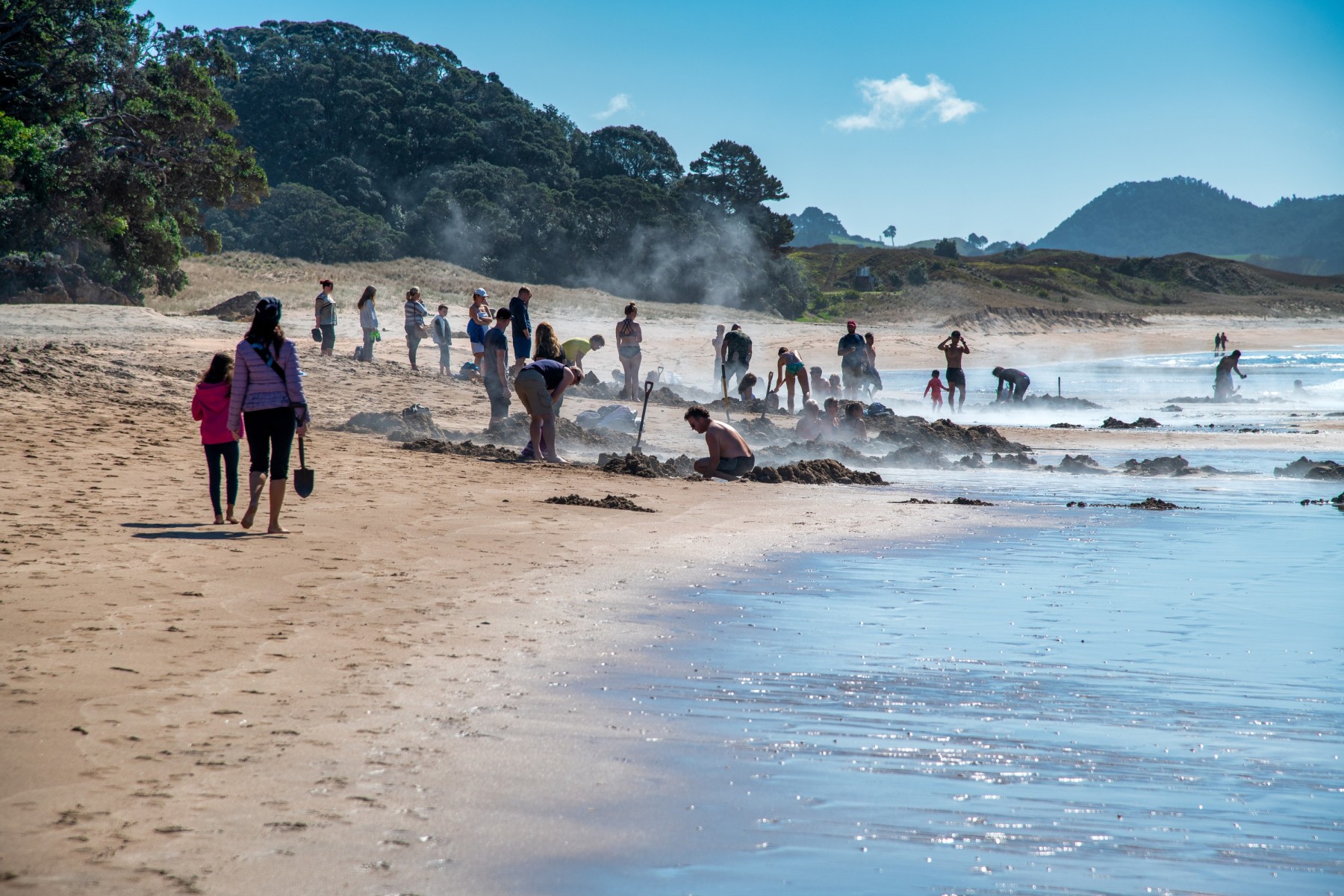
Situated on the Coromandel Peninsula, Hot Water Beach is one of New Zealand's most unique beaches. Visitors flock here to experience the naturally hot water fllowing beneath the sand. At low tide, you can dig your very own hot pool in the sand, thanks to geothermal activity beneath the surface. Just bring a shovel (or rent one nearby) and enjoy a soothing soak in your DIY spa.
The experience is unforgettable, and the beach is also stunning in its own right, with clear waters and beautiful coastal scenery. The beach is a lot smaller than many people realise. Visiting at the start of the low tide or as early as possible if you’re prepared to wait can make your visit more enjoyable.
5. Wharariki Beach - Located on Cape Farewell, Tasman
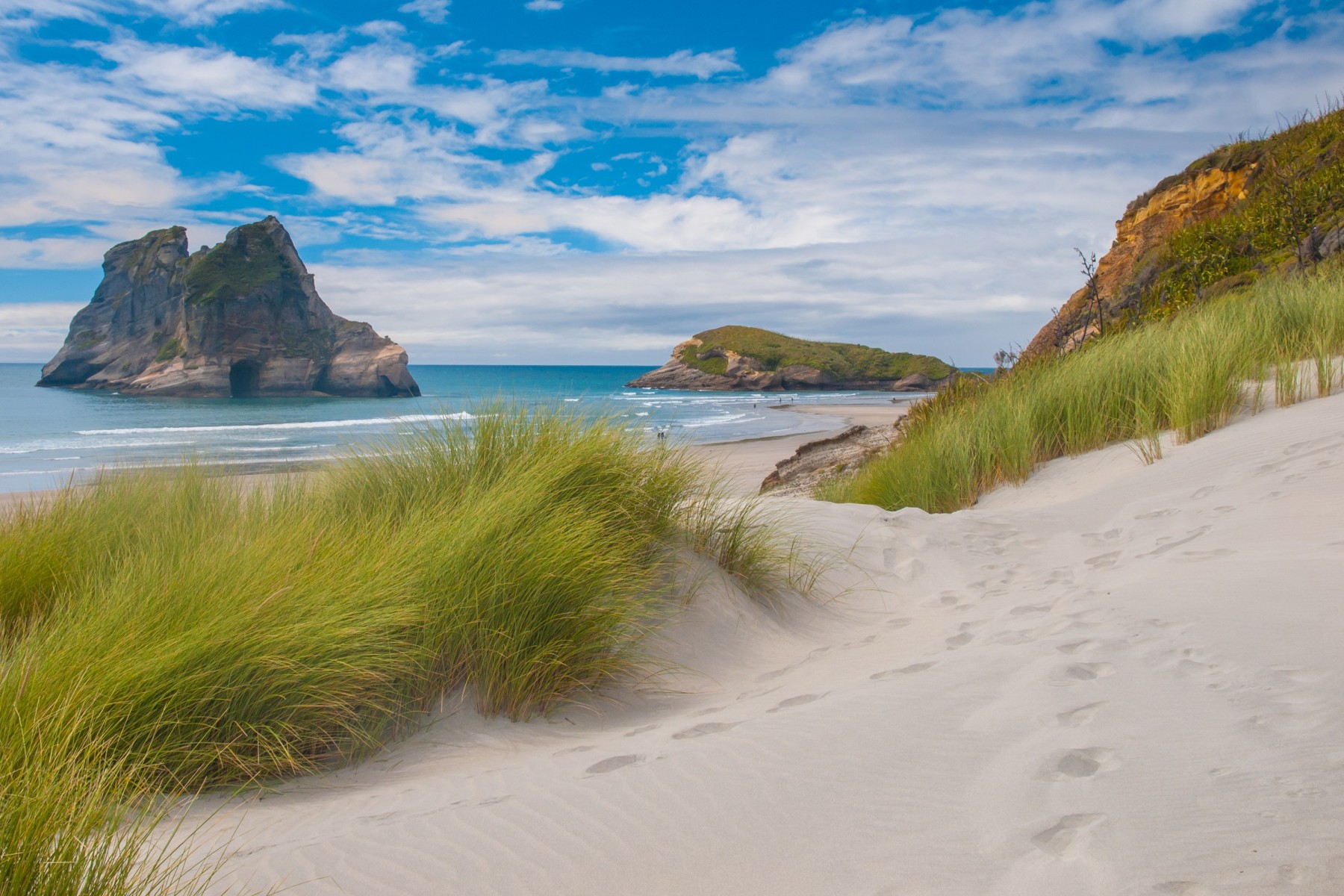
At the top of the South Island, you'll find the remote and wild Wharariki Beach. Getting here requires some effort, but the journey is well worth it. It’s a two-and-a-half-hour drive from Nelson. To reach the beach, you'll need to take a short walk from the car park through farmland and sand dunes.
When you arrive, you'll be greeted by an otherworldly landscape featuring enormous rock formations and caves. It's a paradise for photographers and nature enthusiasts. In fact, a photo of Lion Head Island was used as the Windows 10 screensaver. As well as being famous for its rugged, otherworldly beauty, the beach has many tidal pools which are used by the local seal population as seal pup nurseries.
Make sure you give the resident seals plenty of space and take care before exploring, as seals naturally camouflage against the rocks. You must give seals and other wildlife 20 metres of space at all times.
6. Kaiteriteri Beach - Located in Abel Tasman National Park
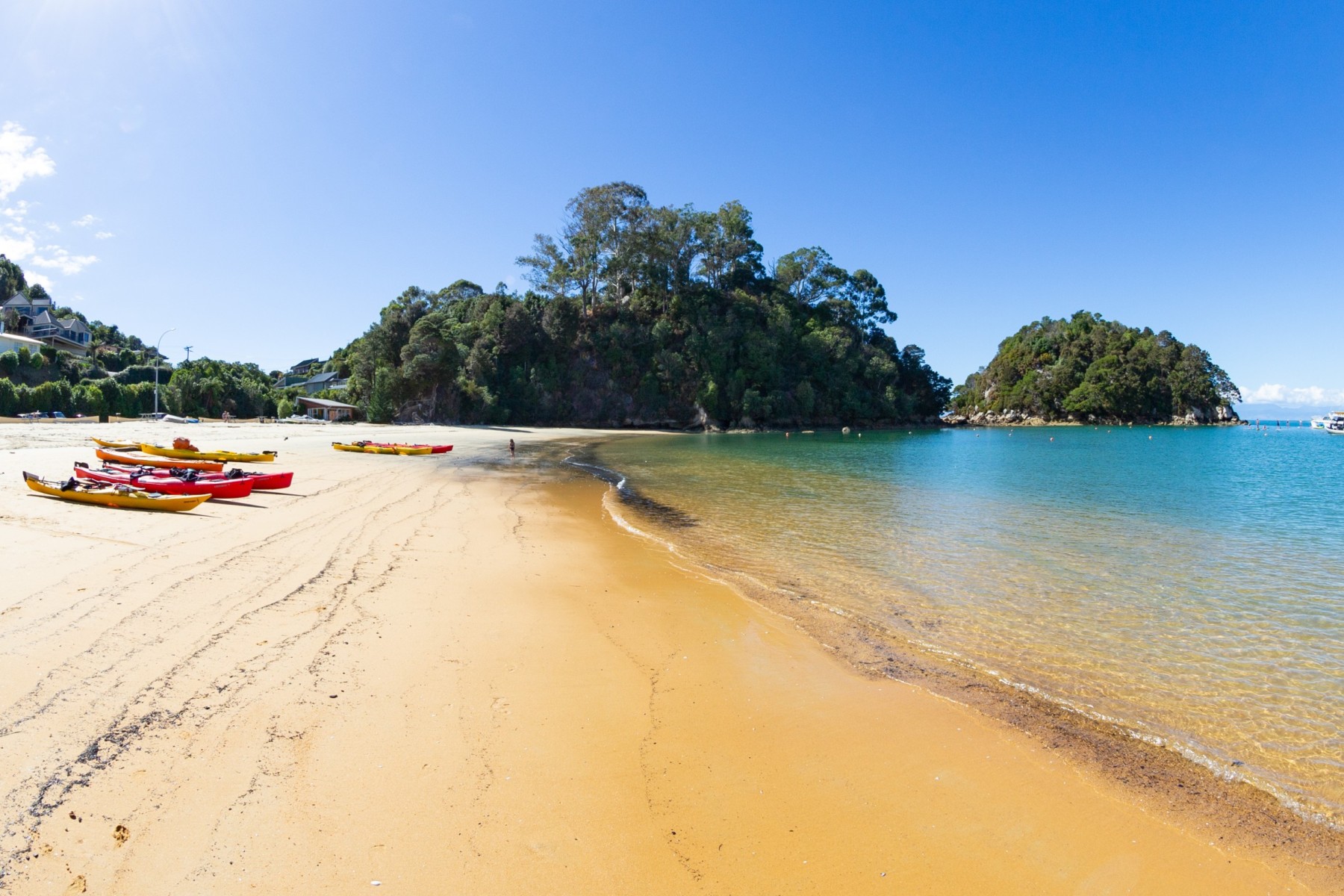
Kaiteriteri is a stunning golden sand beach located in Abel Tasman National Park at the top of the South Island. The park is renowned for its clear turquoise waters and lush coastal scenery. Kaiteriteri serves as an excellent base for exploring the park, offering kayaking, water taxis, and hiking opportunities.
The beach is family-friendly and provides a great spot for swimming and sunbathing. If you're looking for adventure, consider hiking the Abel Tasman Coast Track, which begins nearby. The beach is a popular holiday spot with locals and visitors. Consider visiting outside of the Christmas holidays or in late summer and early Autumn.
7. Raglan Beach - Located half an hour west of Hamilton
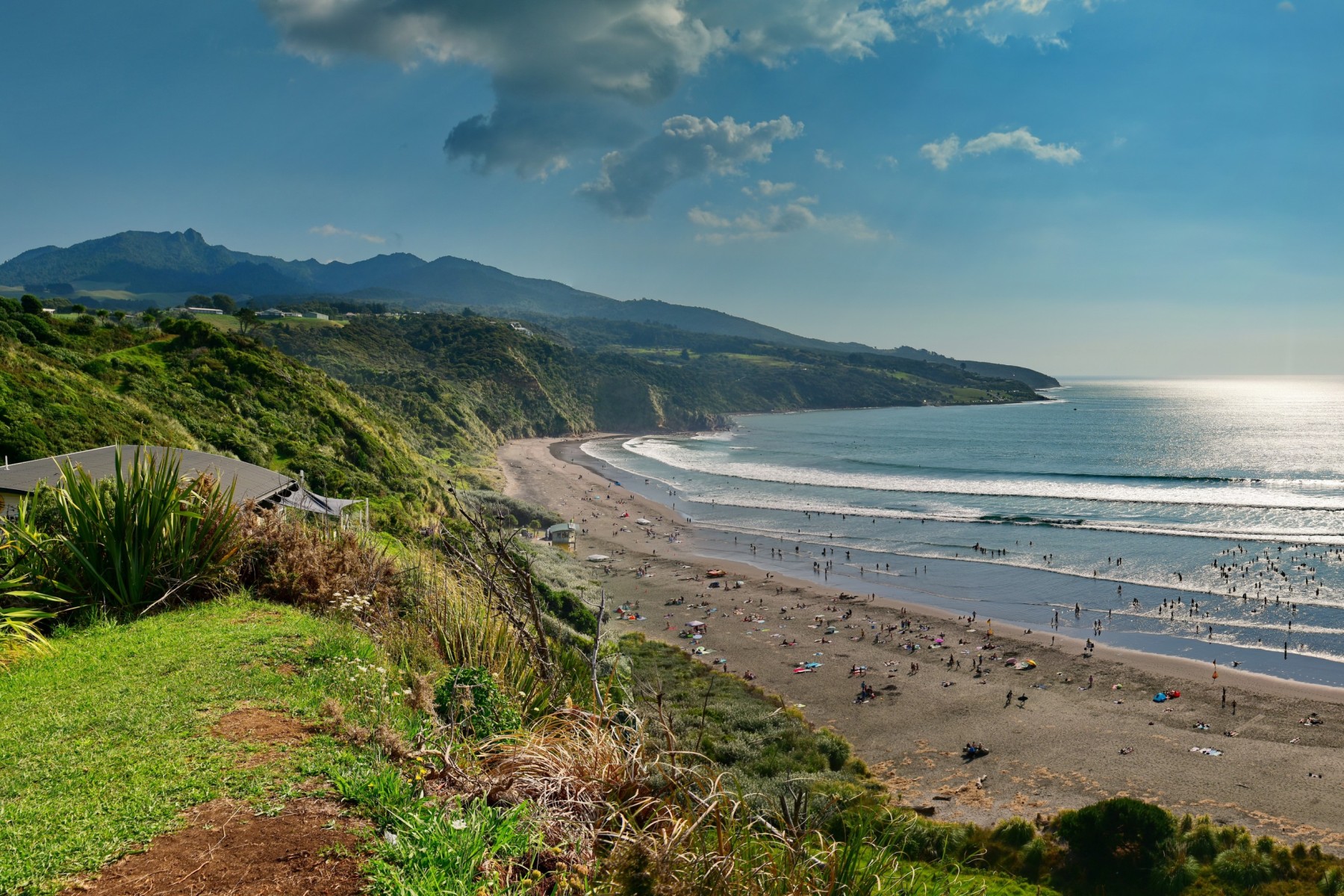
On the North Island's west coast, Raglan is a laid-back surf town with a world-class left-hand point break, considered one of the longest in the world. Located 100km from Piha, there are many similarities between the two towns but both are worth visiting. Raglan is just a half-hour drive from Hamilton which makes it a very popular destination for surfers and visitors all year round. Even if you're not into surfing, the town has a vibrant arts and music scene and the town is worth visiting for its photogenic and relaxing vibe.
8. Whangamata Beach, Located on the Coromandel
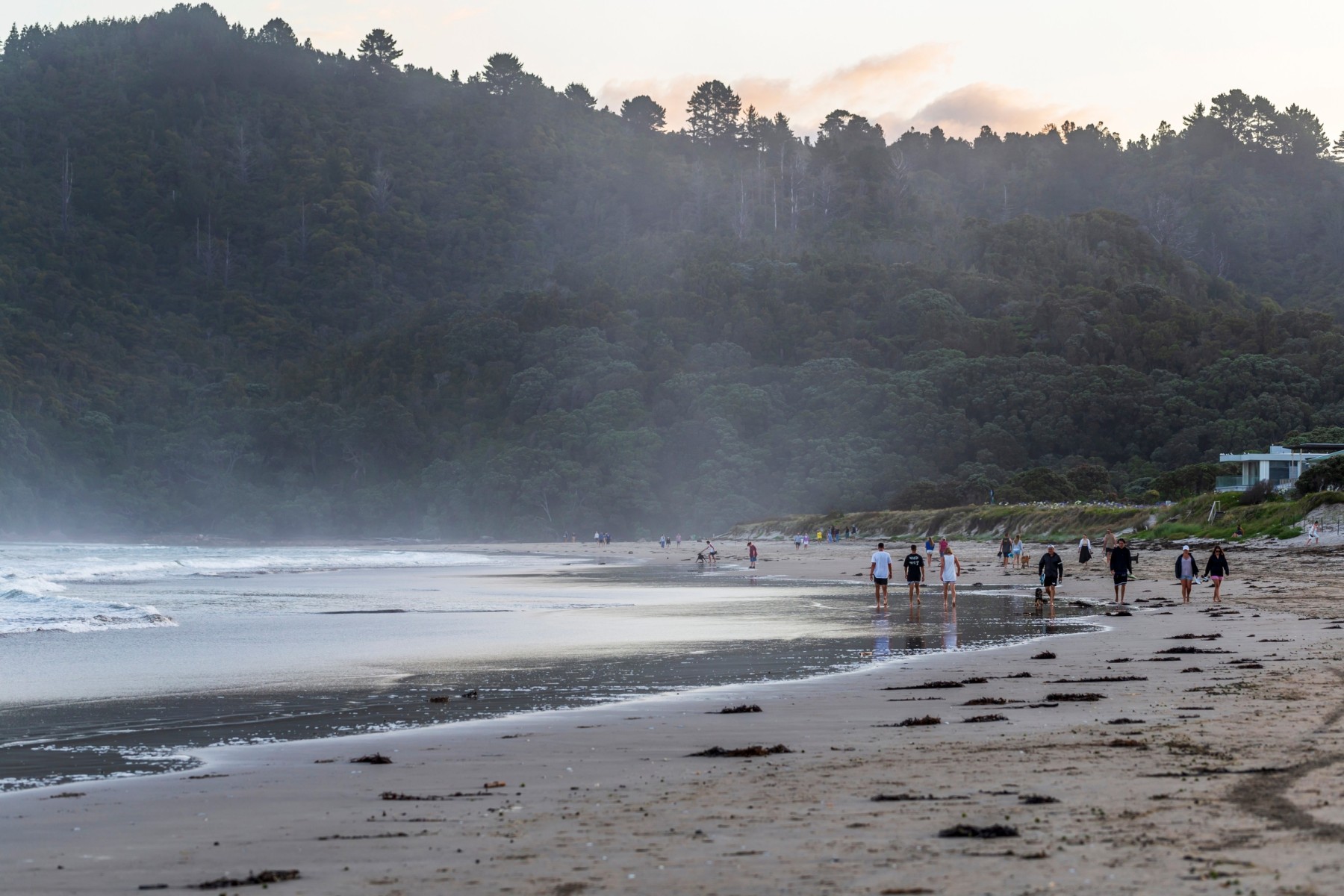
Whangamata Beach, located in the Coromandel region, is a paradise for beachgoers. The beach is known for its golden sand and excellent swimming conditions. There's also a calm estuary, which is perfect for families with young children. Whangamata is a lively holiday town with plenty of cafes, shops, and a friendly atmosphere.
It's an ideal destination for a relaxing beach vacation. Popular activities include fishing, kayaking to Hauturu Island and exploring Coromandel Forest Park. It’s a two-hour ten-minute drive from Auckland, making it a popular spot for Christmas and summer holidays.
9. Hokitika Beach - Located on the South Island’s West Coast

Hokitika, a charming small town on the West Coast of the South Island, is home to a beach that's windswept, unique and beautiful. Hokitika Beach is known for its dramatic driftwood-strewn shores and stunning views of the Southern Alps.
The beach has a strong undertow and isn’t good for swimming, but that doesn’t make it any less worth seeing. Take a leisurely stroll along the beach, and look at the intricate driftwood sculptures created by nature and local artists, before building your own. Hokitika is also ‘famous’ for having a driftwood sign situated on the beach. The beach is a popular spot for sunset photography, and the town itself is a hub for artists, with galleries and shops featuring local artwork and greenstone jewellery.
10. St. Clair Beach - Located in Dunedin
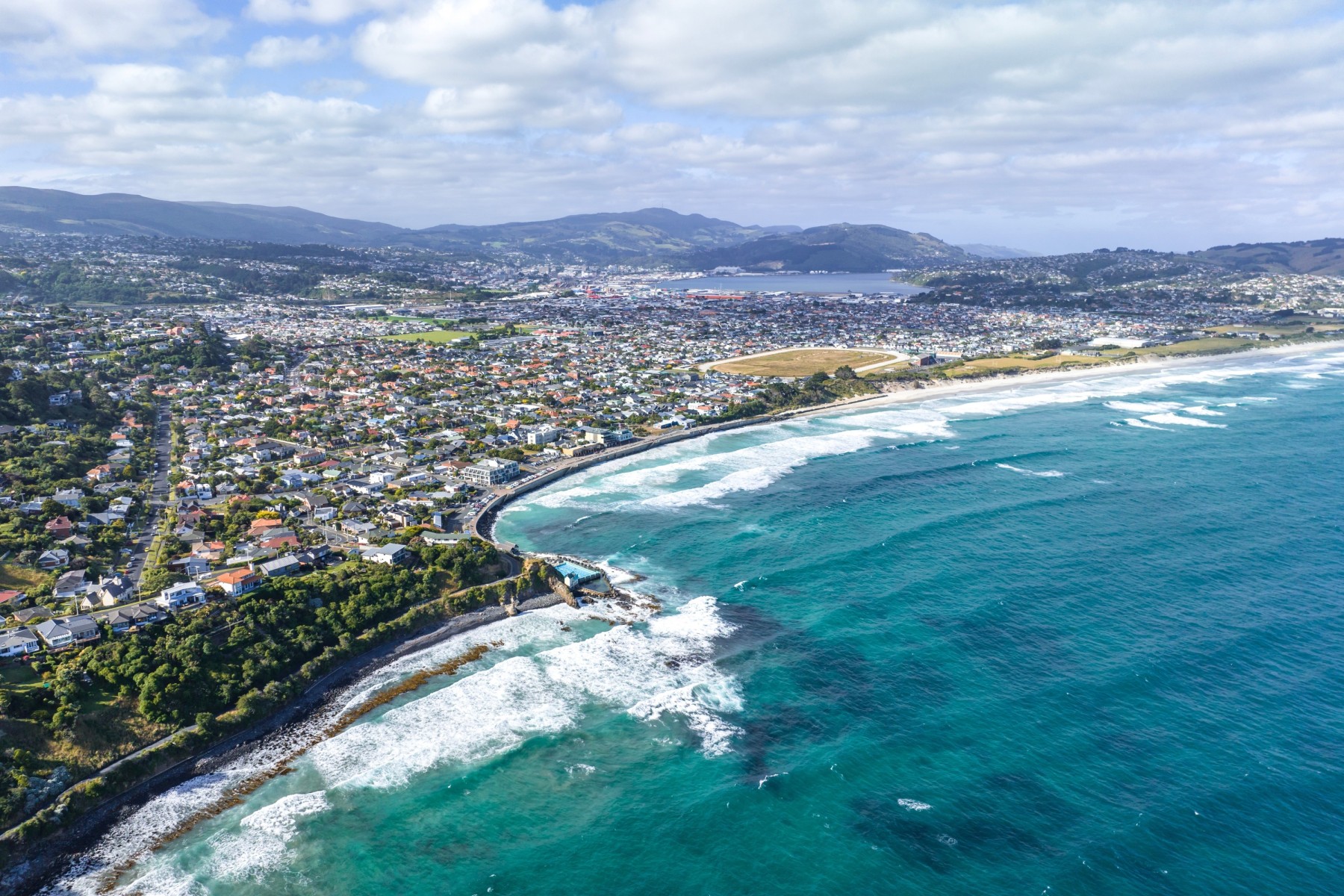
Nestled in the city of Dunedin in the Otago region of the South Island, St. Clair Beach is a great spot for visitors but still has a lovely local charm to it. This sandy beach is a popular spot for both surfers all year around and swimmers during summer. The iconic St. Clair Esplanade has a historic saltwater pool and cafes, restaurants, and shops. The laid-back atmosphere and stunning ocean views make St. Clair Beach a fantastic place to unwind and enjoy the coastal vibe of Dunedin.
11. Riverton Beach - Located in Southland
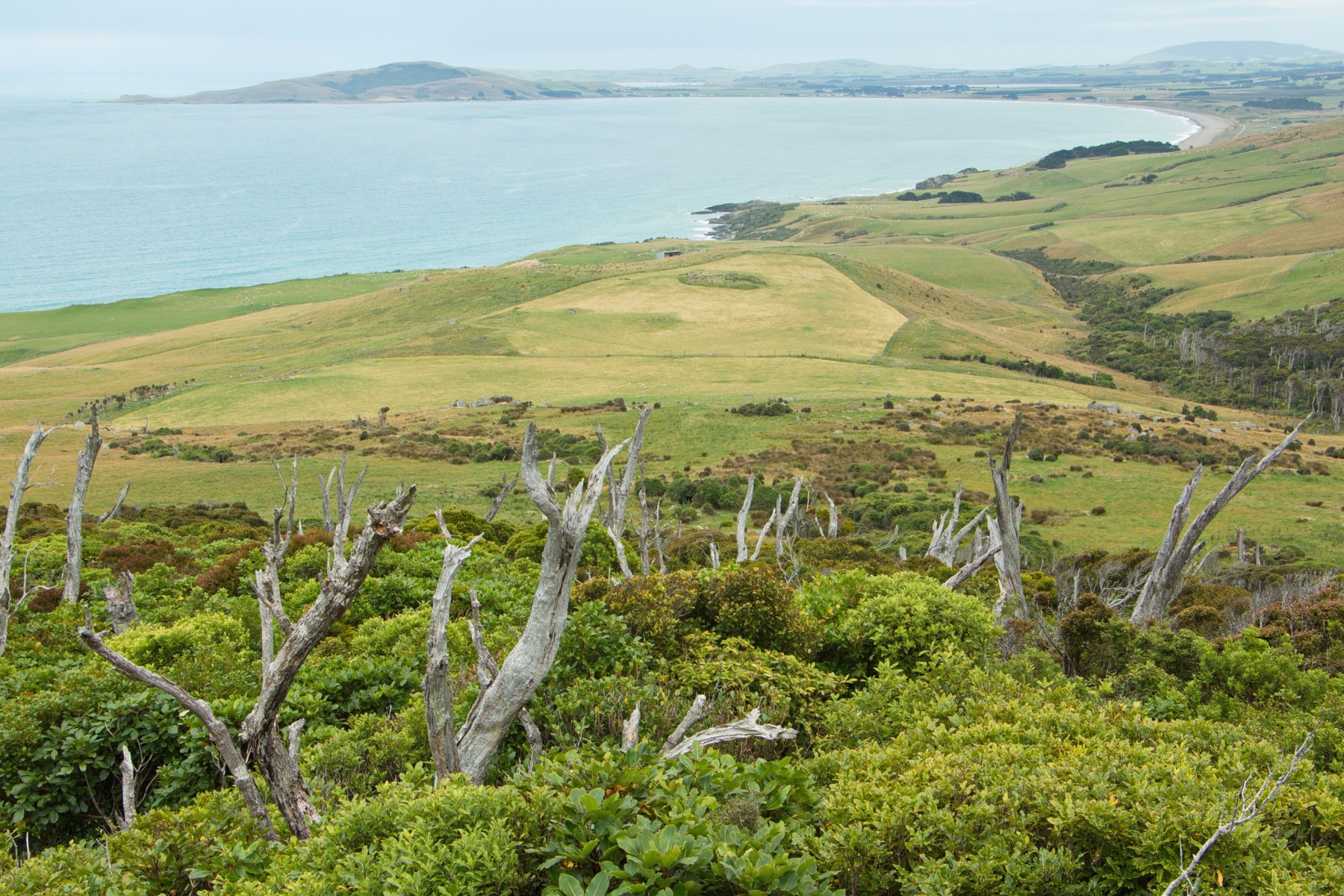
Venturing further south to the rugged and remote region of Southland, you'll discover the quiet beauty of Riverton Beach. Sweeping hills surround this quaint coastal town. At high tide, Riverton Beach is stony and made of pebbles while at low tide, longer stretches of sand emerge.
Riverton is known for its quirky mixture of local artists and fishermen. Just moments away from the beach, you can explore local galleries showcasing the work of talented Southland artists. If you're interested in birdwatching, visit nearby Gemstone Beach, a hotspot for spotting seabirds and collecting colourful gemstones and paua shells from the shore.
Whether you're into surfing, exploring caves, swimming, or simply enjoying the feel of sand between your toes, New Zealand's beaches have something for everyone.
What do our customers say?

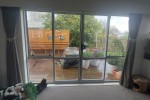


For every (wise)move







